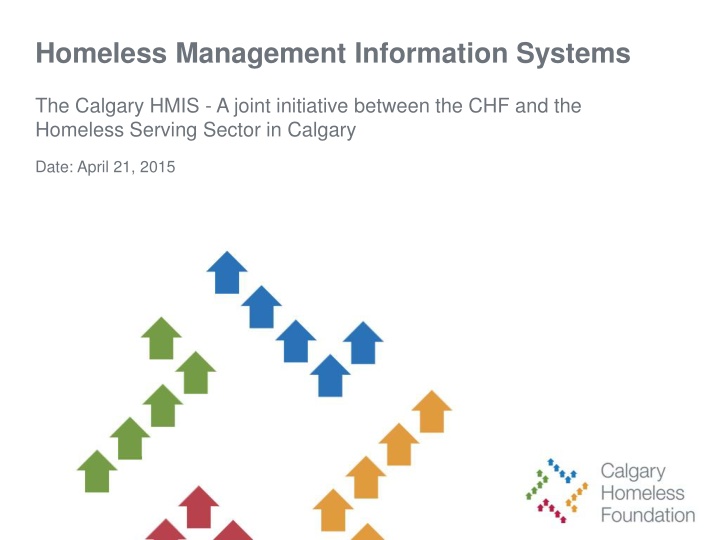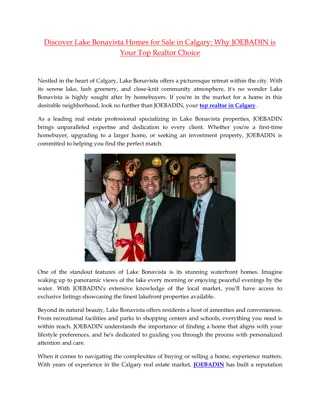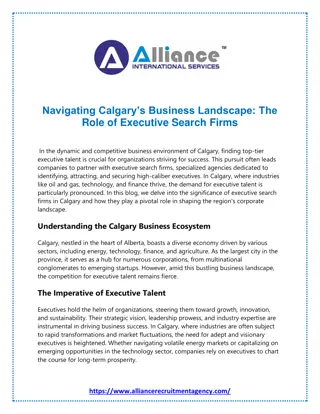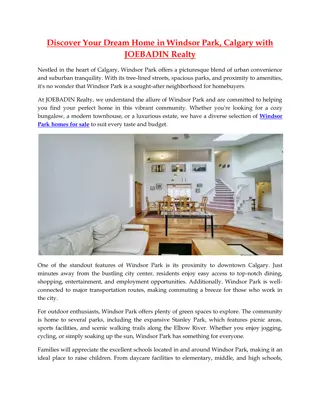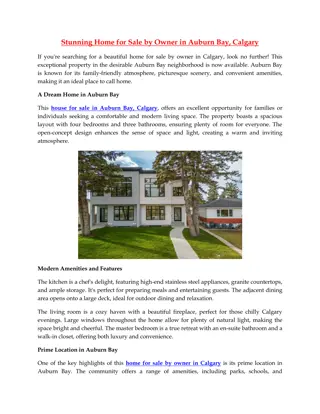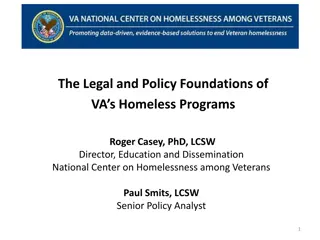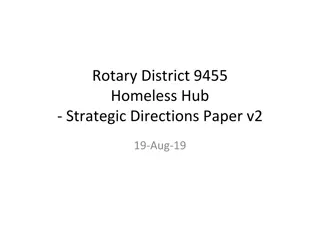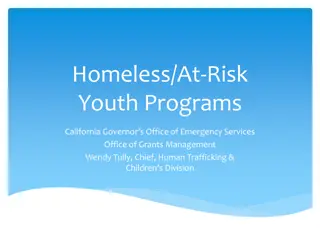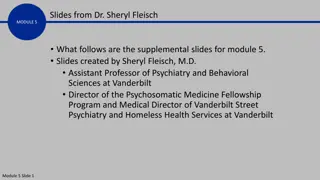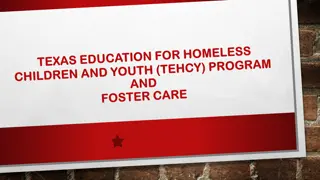Homeless Management Information Systems in Calgary
This information covers the Calgary HMIS joint initiative, building a system of care, shared measurement platform, program types, and the significance of HMIS as a tool for data collection, quality analysis, and decision-making. It also explores the components of HMIS, its role as a client intake tool, service tracking, case management, and abilities for planning and monitoring service delivery and outcomes.
Download Presentation

Please find below an Image/Link to download the presentation.
The content on the website is provided AS IS for your information and personal use only. It may not be sold, licensed, or shared on other websites without obtaining consent from the author.If you encounter any issues during the download, it is possible that the publisher has removed the file from their server.
You are allowed to download the files provided on this website for personal or commercial use, subject to the condition that they are used lawfully. All files are the property of their respective owners.
The content on the website is provided AS IS for your information and personal use only. It may not be sold, licensed, or shared on other websites without obtaining consent from the author.
E N D
Presentation Transcript
Homeless Management Information Systems The Calgary HMIS - A joint initiative between the CHF and the Homeless Serving Sector in Calgary Date: April 21, 2015
Outline Building a System of Care Shared Measurement Platform HMIS as a Tool Data Collection/Quality/Analysis Data Driven Decision Making
Building a coordinated system Chronic and episodic Aboriginal people Youth Families Women Occupancy Return to homelessness Interactions with systems Privacy and safety Client satisfaction Income gains at exit Length of stay Self sufficiency Focus on vulnerable populations Measure outcomes & performance of system & programs Match people with services (coordinated intake) Gather and analyze data Homeless Management Information System Provide shelter, housing and services Emergency shelters Different kinds of housing and support Outreach, prevention and support services
Shared Measurement Identifying common metrics for tracking progress toward a common agenda across organizations, and providing scalable platforms to share data, discuss learnings, and improve strategy and action. Requires funding, broad engagement, infrastructure and a commitment to learning. Benefits are better data, progress tracking towards shared goal, enabling coordination and collaboration, learning and course correction, catalyzing action.
What is HMIS? Captures client-level, system-wide information over time on the characteristics and services needs of men, women, and children experiencing homelessness. Web-based software applications to enter and share client-level data across agencies. ***PIA*** Allows aggregation of client-level data across homeless service agencies to generate unduplicated counts and service patterns of clients served.
HMIS is a tool Client Intake Demographics, data collection for reporting against outcomes Service Tracking Services delivered by a provider Case Management Ability to plan, schedule, and follow-up on delivery of services; Ability to monitor and measure performance goals and outcomes.
HMIS Opportunities Measure success of 10YP Encourage mainstream participation Program measurement Attract resources Assess costs Prevention Measure outcomes Hybrid creatures
Data Quality Must ensure data is: timely, accurate, complete Staff need training on data quality Staff turnover demands training and refreshers
Data Sharing Many of the benefits of HMIS rely on client-level data being shared among programs and providers within a community, but it is not required. However, it is recommended because it greatly increases the usefulness of HMIS data and has the potential to maximize coordinated case management for clients. Encouraging providers to share data is one of the most challenging aspects of HMIS implementation because of the need to protect the confidentiality of client information. Including a wide range of providers in the HMIS planning process will help ensure that providers fully understand how HMIS can benefit their clients and are comfortable with the data privacy provisions in place.
Data Analysis How many men, women, and children in your community are homeless over the course of a year? What are the characteristics and service needs of homeless people in your community? Where do homeless people in your community come from? Who in your community is most at risk of becoming homeless?
How Many? Period Prevalence vs Point-in-Time Snapshot at single point of year - What about over course of year? An annual count provides info on all people who accessed a service over the course of a year Housed vs Served Program occupancy may consist of people waiting for housing How to track? Housing First GOA programs 2012/13
Characteristics of? Adults Current Employability Status Entry and Exit April 2012 - March 2013 Demographics Analysis by sub population Are needs being met? Confirm anecdotes Bust myths 9.82% 31.25% 58.93% Don't Know Not employable at this time Employable Adults by Level of Education Adults by Exit Reason Entry and Exit April 2012 - March 2013 Entry and Exit April 2012 - March 2013 14.53% 21.37% 25.64% 40.17% 17.95% 13.68% 28.21% 38.46% Completed High School Some High School Other Completed Post Secondary Some Post Secondary Negative Neutral or Other Positive
Where from? Geographic location Low socio-economic neighbourhoods Primary Residence question Helps prioritize prevention efforts Adults by Primary Residence Prior to Program Entry Entry and Exit April 2012 - March 2013 15.38% 30.77% 8.55% 45.30% Addictions Treatment Facility Renting Emergency Shelter Other
Service utilization Length of Stay Clusters of shelter users
Program Outcomes Occupancy Reduce Public System Utilization Increase Access to Mainstream Services Increase Income Positive Exits
Do Good Data Data is the voice of the client as they navigate the System of Care. It is a righteous calling to be a data analyst. Live up to that calling.
Acknowledgements Tracking the Homeless: An Overview of HMIS. Making the Most of HMIS Data. The Agency Staff in Calgary talking to their clients, collecting the data, inputting it into our HMIS, and pulling ART reports each month.
